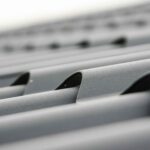Energy Efficiency
FACT
Decreasing the use of air conditioning can have a dramatically positive effect on our environment. It lessens our demand for electricity, the production of which, unfortunately, is a major contributor to smog and airborne pollution.
ANALYSIS
Much of the summer heat gain into a structure occurs through the roof that lies so prone to the sun’s rays. Reducing the heat gain through the roof will reduce the structure’s air conditioning needs. Reflectivity of heat does not play much of a role in the winter efficiency of building envelopes as the protection against heat escape should take place with insulation on top of the building’s ceilings.
SOLUTION
Several major studies have confirmed that roofing in light colors or with shiny metallic surfaces is very good at reflecting radiant heat. However, many property owners may object to the aesthetics of a white or metallic roofing. It is known that aluminum naturally has a very high emissivity, or reflection of radiant heat. This makes it a wise choice for roofing. Additionally, metal roofs that are formed to have airspaces beneath them are also very beneficial as they block conductive heat transfer. Even though the metal itself may get hot to the touch, it cannot transfer that heat into the structure because the dead airspace between the metal and the roof deck is a great insulator. For additional energy efficiency with metal roofing, Classic Products “hI-R Heat Barrier Finishes” are durable KYNAR/HYLAR coatings that, due to their unique chemistry involving “stealth” technology, are highly reflective of heat even in dark colors. All of these things work together to make metal roofing a wise choice for energy efficiency that, in many cases, meets various “cool roof” criteria which can make property owners in certain states eligible for tax benefits.

 How can I help you?
How can I help you?